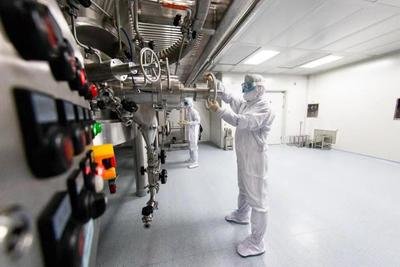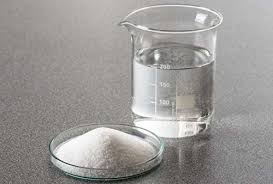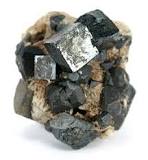ไฮโดรเจนเปอร์ออกไซด์ที่ครอบคลุม: 3%, 12%, 6% และบริสุทธิ์พิเศษ
ตั้งแต่ตู้ยาไปจนถึงการทําความสะอาดในอุตสาหกรรมและแม้แต่เทคโนโลยีขั้นสูงไฮโดรเจนเปอร์ออกไซด์ (H2O2) เป็นสารประกอบทางเคมีอเนกประสงค์ที่น่าทึ่ง ความสามารถในการออกซิไดซ์ ฆ่าเชื้อ และสารฟอกขาวทําให้เป็นวัตถุดิบหลักในการใช้งานที่หลากหลาย อย่างไรก็ตาม ไฮโดรเจนเปอร์ออกไซด์ไม่ใช่วิธีแก้ปัญหาเดียวที่เหมาะกับทุกคน มีให้เลือกหลายระดับ โดยแต่ละชนิดมีการใช้งานเฉพาะและข้อควรพิจารณาด้านความปลอดภัย คู่มือฉบับสมบูรณ์นี้จะสํารวจความแตกต่างที่สําคัญ การใช้งาน และโปรโตคอลความปลอดภัยสําหรับความเข้มข้นของไฮโดรเจนเปอร์ออกไซด์ทั่วไป: 3%, 6%, 12% และไฮโดรเจนเปอร์ออกไซด์บริสุทธิ์พิเศษ
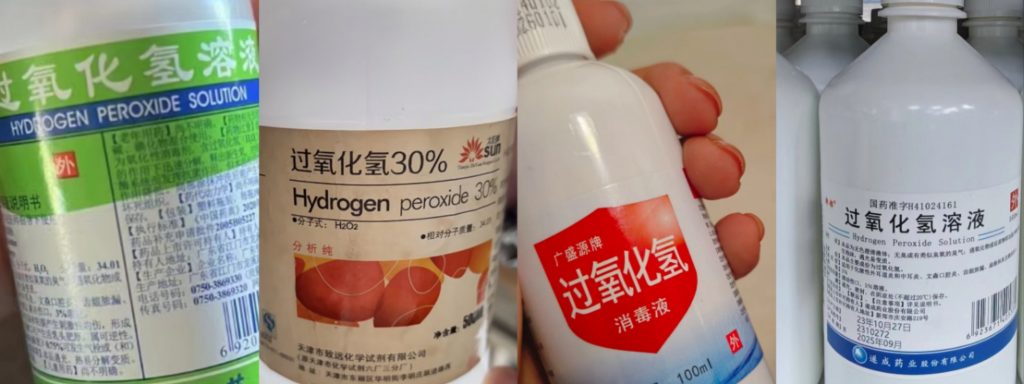
ทําความเข้าใจกับความเข้มข้นที่แตกต่างกันของไฮโดรเจนเปอร์ออกไซด์
เปอร์เซ็นต์ที่ระบุไว้บนขวดไฮโดรเจนเปอร์ออกไซด์ระบุความเข้มข้นของไฮโดรเจนเปอร์ออกไซด์เป็นอัตราส่วนน้ําหนัก/ปริมาตร (w/v) ในน้ํา ตัวเลขที่ดูเหมือนเรียบง่ายนี้มีผลกระทบอย่างลึกซึ้งต่อศักยภาพของสารละลายและวิธีการจัดการ การทําความเข้าใจความแตกต่างเหล่านี้เป็นสิ่งสําคัญสําหรับการใช้งานที่ปลอดภัยและมีประสิทธิภาพ
ไฮโดรเจนเปอร์ออกไซด์ 3% (เกรดครัวเรือน) สารละลาย 3%:
นี่คือความเข้มข้นของไฮโดรเจนเปอร์ออกไซด์ที่พบบ่อยที่สุดในร้านขายยาและซูเปอร์มาร์เก็ต ไฮโดรเจนเปอร์ออกไซด์ 3% มักถูกระบุว่าเป็น “น้ํายาฆ่าเชื้อปฐมพยาบาล” ใช้กันอย่างแพร่หลายสําหรับการฆ่าเชื้อบาดแผลเล็กน้อย โดยทําหน้าที่เป็นสารออกซิไดซ์อ่อนๆ เพื่อฆ่าเชื้อแบคทีเรีย นอกจากนี้ยังเป็นส่วนผสมทั่วไปในน้ํายาบ้วนปากบางชนิดเพื่อสุขอนามัยช่องปาก และสามารถใช้ทําความสะอาดในครัวเรือนเบาๆ เช่น ขจัดคราบเล็กน้อย แม้ว่าโดยทั่วไปจะถือว่าปลอดภัยสําหรับการใช้เฉพาะที่ในรูปแบบเจือจาง แต่การกลืนกินอาจเป็นอันตรายและทําให้ระบบทางเดินอาหารมีปัญหา
ไฮโดรเจนเปอร์ออกไซด์ 6% (มักอยู่ในสารฟอกขาวผม/น้ํายาฆ่าเชื้อบางชนิด):
ไฮโดรเจนเปอร์ออกไซด์ 6% มักพบในสูตรฟอกขาวผมที่ใช้ในระดับมืออาชีพ นอกจากนี้ยังมีอยู่ในน้ํายาฆ่าเชื้อและน้ํายาฆ่าเชื้อที่เข้มข้นกว่าสําหรับพื้นผิว ความเข้มข้นนี้มีศักยภาพมากกว่า 3% และต้องใช้ความระมัดระวังมากขึ้น การสัมผัสโดยตรงอาจทําให้เกิดการระคายเคืองผิวหนังและดวงตา และการกลืนกินเป็นอันตราย ไม่ควรใช้โดยตรงกับผิวหนังเพื่อการดูแลบาดแผล เว้นแต่จะได้รับคําแนะนําจากผู้เชี่ยวชาญโดยเฉพาะ
ไฮโดรเจนเปอร์ออกไซด์ 12% (อุตสาหกรรม / ห้องปฏิบัติการ / การทําความสะอาดเฉพาะทาง):
ไฮโดรเจนเปอร์ออกไซด์ 12% เป็นสารละลายที่มีความเข้มข้นมากขึ้นอย่างมีนัยสําคัญซึ่งส่วนใหญ่ใช้ในการใช้งานในอุตสาหกรรมเช่นการฟอกสีสิ่งทอและเยื่อกระดาษเป็นรีเอเจนต์ในห้องปฏิบัติการและสําหรับงานทําความสะอาดเฉพาะทางเช่นการควบคุมสาหร่ายในสระว่ายน้ํา (ใช้กับโปรโตคอลเฉพาะ) ความเข้มข้นนี้มีศักยภาพสูงและกัดกร่อน ต้องใช้มาตรการป้องกันความปลอดภัยอย่างเข้มงวด รวมถึงการใช้ PPE ที่เหมาะสม เช่น ถุงมือทนสารเคมีและอุปกรณ์ป้องกันดวงตา การสัมผัสโดยตรงอาจทําให้เกิดแผลไหม้อย่างรุนแรง และการกลืนกินเป็นอันตรายอย่างยิ่ง ไม่ควรใช้โดยตรงกับผิวหนังโดยไม่มีการเจือจางที่เหมาะสมและคําแนะนําจากผู้เชี่ยวชาญ
ไฮโดรเจนเปอร์ออกไซด์บริสุทธิ์พิเศษ (ความบริสุทธิ์สูงสําหรับการใช้งานที่ละเอียดอ่อน):
ไฮโดรเจนเปอร์ออกไซด์บริสุทธิ์พิเศษมีลักษณะเป็นระดับของสิ่งสกปรกที่ต่ํามาก ความบริสุทธิ์สูงนี้จําเป็นสําหรับการใช้งานที่ละเอียดอ่อน เช่น การผลิตเซมิคอนดักเตอร์ การใช้งานทางเภสัชกรรม และการแปรรูปอาหารบางอย่าง (มักเรียกว่าไฮโดรเจนเปอร์ออกไซด์เกรดอาหาร ซึ่งเป็นไปตามมาตรฐานความบริสุทธิ์เฉพาะ) แม้ว่า H2O2 เองจะยังคงมีความเสี่ยงขึ้นอยู่กับความเข้มข้น (ซึ่งอาจแตกต่างกันไปแม้ในเกรดบริสุทธิ์พิเศษ) แต่สิ่งสกปรกที่ลดลงจะป้องกันการปนเปื้อนในกระบวนการที่ละเอียดอ่อน การจัดการยังคงต้องใช้มาตรการความปลอดภัยที่เหมาะสมตามความเข้มข้นเฉพาะของแปรงสีฟันขนนุ่มบริสุทธิ์พิเศษ
ความแตกต่างที่สําคัญและการใช้งาน: ภาพรวมเปรียบเทียบ
| สมาธิ | ความมีประสิทธิภาพ | การใช้งานทั่วไป | ข้อควรระวังความปลอดภัย | ความสะดวก |
|---|---|---|---|---|
| 3% | เล็กน้อย | ฆ่าเชื้อบาดแผล, น้ํายาบ้วนปาก, ทําความสะอาดในครัวเรือนเบา ๆ , ขจัดคราบ | โดยทั่วไปปลอดภัยสําหรับการใช้งานเฉพาะที่ หลีกเลี่ยงการกลืนกิน | ร้านขายยา ซูเปอร์มาร์เก็ต |
| 6% | ปานกลาง | การฟอกสีผม (มืออาชีพ) สารฆ่าเชื้อที่เข้มข้นกว่า | หลีกเลี่ยงการสัมผัสผิวหนัง/ตา ห้ามกลืนกิน ใช้ด้วยความระมัดระวัง | ร้านขายอุปกรณ์ความงาม ซัพพลายเออร์ทําความสะอาดเฉพาะทาง |
| 12% | สูง | การฟอกขาวในอุตสาหกรรม, รีเอเจนต์ในห้องปฏิบัติการ, การฆ่าเชื้อ (เฉพาะ), การควบคุมสาหร่าย | มีฤทธิ์กัดกร่อนสูงต้องใช้ PPE ที่เข้มงวดหลีกเลี่ยงการสัมผัสทั้งหมดอย่ากลืนกิน | ซัพพลายเออร์เคมีภัณฑ์ ผู้จัดจําหน่ายอุตสาหกรรม |
| บริสุทธิ์พิเศษ | แตก ต่าง กัน | การผลิตเซมิคอนดักเตอร์, ยา, การแปรรูปอาหารบางชนิด, การวิจัย | ปฏิบัติตามแนวทางความปลอดภัยตามความเข้มข้นเฉพาะลดการปนเปื้อน | ซัพพลายเออร์เคมีภัณฑ์เฉพาะทางผู้จัดจําหน่าย |
ส่งออกไปยังชีต
ความปลอดภัยมาก่อน: การจัดการไฮโดรเจนเปอร์ออกไซด์อย่างมีความรับผิดชอบ
โดยไม่คํานึงถึงความเข้มข้นการจัดการไฮโดรเจนเปอร์ออกไซด์อย่างมีความรับผิดชอบเป็นสิ่งสําคัญยิ่งที่ไฮโดรเจนเปอร์ออกไซด์ในระดับสูงสามารถทําให้เคลือบฟันและเนื้อฟันอ่อนแอลงได้ .
ข้อควรระวังเพื่อความปลอดภัยทั่วไปสําหรับความเข้มข้นทั้งหมด:
- สวมอุปกรณ์ป้องกันส่วนบุคคล (PPE) ที่เหมาะสมเสมอ รวมถึงถุงมือที่ทนต่อสารเคมีและอุปกรณ์ป้องกันดวงตา (แว่นตานิรภัยหรือกระบังหน้า)
- ตรวจสอบให้แน่ใจว่ามีการระบายอากาศเพียงพอในพื้นที่ทํางาน
- หลีกเลี่ยงการสัมผัสกับผิวหนัง ดวงตา และเสื้อผ้า
- ห้ามกลืนกินไฮโดรเจนเปอร์ออกไซด์
- เก็บให้ห่างจากวัสดุไวไฟ เนื่องจากสามารถปล่อยออกซิเจน สนับสนุนการเผาไหม้
- เก็บไฮโดรเจนเปอร์ออกไซด์ไว้ในที่เย็นและมืดในภาชนะเดิมที่มีช่องระบายอากาศเพื่อป้องกันการสะสมของแรงดันจากการสลายตัว
- เก็บให้พ้นมือเด็กและสัตว์เลี้ยง
มาตรการความปลอดภัยเฉพาะตามความเข้มข้น:
ความเข้มข้นที่สูงขึ้น (6%, 12% และ Ultra Pure) จําเป็นต้องมีความระมัดระวังมากขึ้น ใช้ถุงมือที่หนากว่าและทนทานกว่าและกระบังหน้าเมื่อจัดการกับเกรดเหล่านี้ ตระหนักอย่างเฉียบพลันถึงลักษณะการกัดกร่อนของไฮโดรเจนเปอร์ออกไซด์ 12% และให้แน่ใจว่าสามารถเข้าถึงสถานีล้างตาและฝักบัวนิรภัยได้ทันทีที่ฉันมักจะเอื้อมมือไปหาสารละลายไฮโดรเจนเปอร์ออกไซด์ 3%
มาตรการปฐมพยาบาล:
ในกรณีที่สัมผัสโดยไม่ได้ตั้งใจ:
- สัมผัสผิวหนัง: ล้างบริเวณที่ได้รับผลกระทบทันทีด้วยน้ําปริมาณมากเป็นเวลาอย่างน้อย 15-20 นาที ถอดเสื้อผ้าที่ปนเปื้อนออก ไปพบแพทย์หากยังคงระคายเคืองหรือเกิดแผลไหม้
- สบตา: ล้างตาทันทีด้วยน้ําต่อเนื่องเป็นเวลาอย่างน้อย 15-20 นาที โดยเปิดเปลือกตาไว้ ไปพบแพทย์ทันที
- การบริโภค: อย่าทําให้อาเจียน ดื่มน้ําหรือนมในปริมาณเล็กน้อยหากบุคคลนั้นมีสติ ไปพบแพทย์ทันทีหรือโทรติดต่อศูนย์ควบคุมพิษ
- การหายใจเข้า: ย้ายบุคคลนั้นไปยังที่ที่มีอากาศบริสุทธิ์ทันที หากหายใจลําบาก ให้ออกซิเจนหากได้รับการฝึกฝน ไปพบแพทย์
การเลือกความเข้มข้นที่เหมาะสมกับความต้องการของคุณ
การเลือกความเข้มข้นของไฮโดรเจนเปอร์ออกไซด์ที่เหมาะสมขึ้นอยู่กับการใช้งานที่ต้องการทั้งหมด
- ระบุวัตถุประสงค์การใช้งาน: กําหนดงานให้ชัดเจน สําหรับการตัดเล็กน้อย 3% มักจะเพียงพอแล้ว สําหรับการฟอกสีผม ให้ปฏิบัติตามคําแนะนําของผู้เชี่ยวชาญสําหรับ 6% หรือสูงกว่า กระบวนการทางอุตสาหกรรมจะระบุความเข้มข้นที่ต้องการ
- ปฏิบัติตามคําแนะนําผลิตภัณฑ์: ปฏิบัติตามคําแนะนําที่ให้ไว้บนฉลากผลิตภัณฑ์ไฮโดรเจนเปอร์ออกไซด์เฉพาะเสมอ คําแนะนําเหล่านี้จะสรุปการใช้งานที่ปลอดภัยและมีประสิทธิภาพ
- หากมีข้อสงสัย ให้เจือจางหรือเลือกความเข้มข้นที่ต่ํากว่า: หากคุณไม่แน่ใจโดยทั่วไปจะปลอดภัยกว่าที่จะเริ่มต้นด้วยความเข้มข้นที่ต่ํากว่าหรือเจือจางความเข้มข้นที่สูงขึ้นอย่างระมัดระวังหากจําเป็น ตรวจสอบให้แน่ใจว่าคุณเข้าใจเทคนิคการเจือจางที่เหมาะสมและใช้การวัดที่แม่นยํา
- พิจารณาข้อกําหนดความบริสุทธิ์: สําหรับการใช้งานที่ละเอียดอ่อน เช่น การแปรรูปอาหารหรือการใช้งานทางการแพทย์บางอย่าง ให้แน่ใจว่าคุณใช้ไฮโดรเจนเปอร์ออกไซด์เกรดอาหารหรือไฮโดรเจนเปอร์ออกไซด์บริสุทธิ์พิเศษที่ตรงตามมาตรฐานความบริสุทธิ์ที่กําหนด อย่าพยายามใช้ไฮโดรเจนเปอร์ออกไซด์ภายในโดยไม่ได้รับคําแนะนําที่ชัดเจนจากผู้เชี่ยวชาญด้านสุขภาพที่มีคุณสมบัติเหมาะสม
สรุป: การนําทางโลกแห่งความเข้มข้นของไฮโดรเจนเปอร์ออกไซด์
ไฮโดรเจนเปอร์ออกไซด์เป็นเครื่องมือที่ทรงพลังพร้อมการใช้งานที่หลากหลาย แต่ประสิทธิภาพและความปลอดภัยนั้นเชื่อมโยงกับความเข้มข้นอย่างแท้จริง การทําความเข้าใจความแตกต่างระหว่างไฮโดรเจนเปอร์ออกไซด์ 3%, 6%, 12% และบริสุทธิ์พิเศษ พร้อมกับการใช้งานเฉพาะและข้อควรระวังด้านความปลอดภัยที่จําเป็น เป็นสิ่งสําคัญสําหรับการจัดการอย่างมีความรับผิดชอบ ปฏิบัติตามคําแนะนําของผลิตภัณฑ์ และปรึกษาผู้เชี่ยวชาญเสมอเมื่อต้องรับมือกับความเข้มข้นที่สูงขึ้นหรือการใช้งานเฉพาะทาง ด้วยการตัดสินใจอย่างชาญฉลาด คุณจะสามารถควบคุมความเก่งกาจของไฮโดรเจนเปอร์ออกไซด์ได้อย่างปลอดภัยและมีประสิทธิภาพ
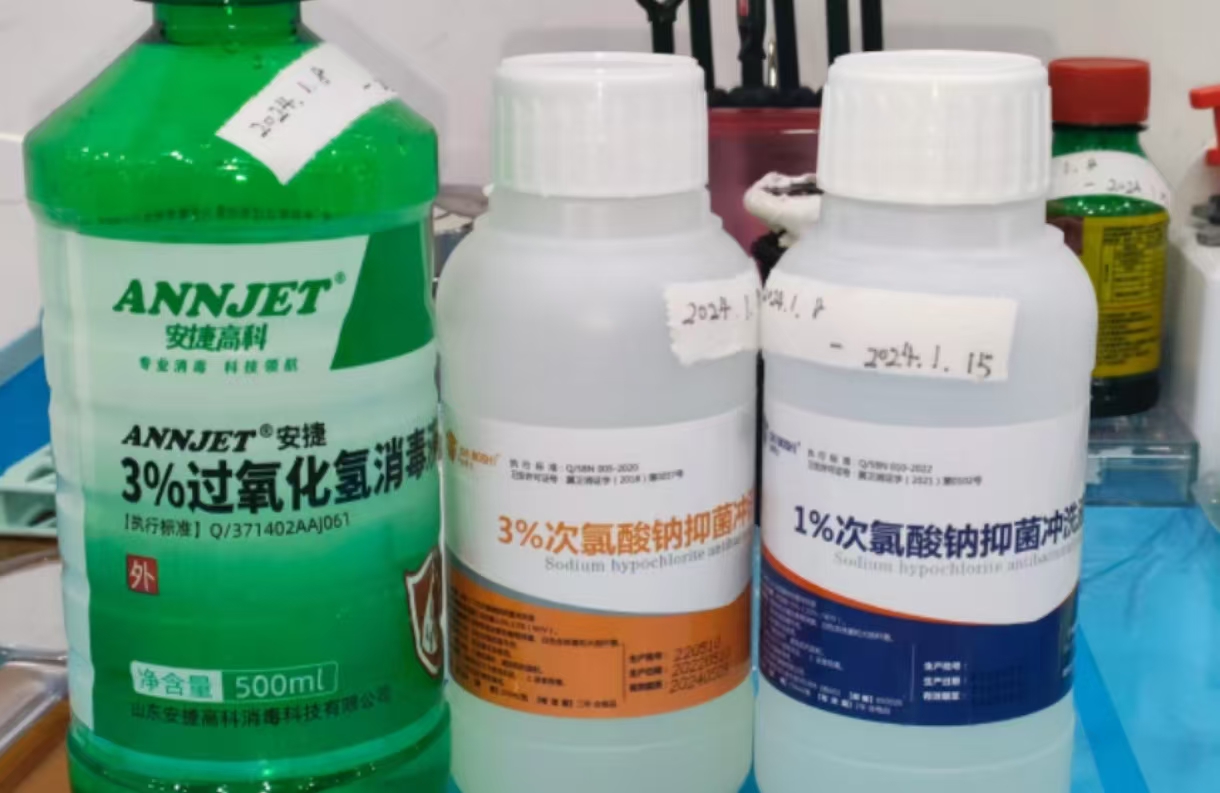
คําถามที่พบบ่อย (FAQ)
- ฉันสามารถเจือจางไฮโดรเจนเปอร์ออกไซด์ 12% ให้เป็น 3% ได้หรือไม่? ใช่คุณสามารถทําได้ ในการทําสารละลาย 3% จากสารละลาย 12% โดยทั่วไปคุณจะต้องผสมไฮโดรเจนเปอร์ออกไซด์ 12% หนึ่งส่วนกับน้ําสามส่วน (อัตราส่วน 1:3) เติมไฮโดรเจนเปอร์ออกไซด์ลงในน้ําอย่างช้าๆ เสมอ และสวม PPE ที่เหมาะสมระหว่างการเจือจาง
- ไฮโดรเจนเปอร์ออกไซด์เกรดอาหารใช้ทําอะไร? ไฮโดรเจนเปอร์ออกไซด์เกรดอาหาร (โดยทั่วไปจะมีระดับความบริสุทธิ์สูงเฉพาะ ซึ่งมักจะอยู่ที่ประมาณ 35%) มีการใช้งานที่ได้รับการอนุมัติอย่างจํากัดในการแปรรูปอาหาร เช่น บรรจุภัณฑ์ปลอดเชื้อ ไม่ควรรับประทานโดยตรงโดยไม่มีการดูแลจากแพทย์อย่างเข้มงวด
- ไฮโดรเจนเปอร์ออกไซด์ 6% ปลอดภัยต่อผิวหรือไม่? การสัมผัสโดยตรงกับไฮโดรเจนเปอร์ออกไซด์ 6% อาจทําให้เกิดการระคายเคืองผิวหนังและควรหลีกเลี่ยง ไม่แนะนําสําหรับการดูแลบาดแผลทั่วไป
- อะไรคือสัญญาณของพิษไฮโดรเจนเปอร์ออกไซด์? อาการอาจแตกต่างกันไปขึ้นอยู่กับความเข้มข้นและเส้นทางการสัมผัส แต่อาจรวมถึงคลื่นไส้ อาเจียน ปวดท้อง และในกรณีที่รุนแรง ผลกระทบทางระบบที่ร้ายแรงกว่า
- ฉันจะซื้อไฮโดรเจนเปอร์ออกไซด์ที่มีความเข้มข้นต่างกันได้ที่ไหน 3% มีจําหน่ายทั่วไปในร้านขายยาและซูเปอร์มาร์เก็ต 6% มักพบได้ในร้านขายอุปกรณ์ความงาม โดยทั่วไปแล้วไฮโดรเจนเปอร์ออกไซด์ 12% และบริสุทธิ์พิเศษจะซื้อจากซัพพลายเออร์เคมีภัณฑ์และผู้จัดจําหน่ายอุตสาหกรรม
- ไฮโดรเจนเปอร์ออกไซด์ที่ “เสถียร” หมายถึงอะไร? สารทําให้คงตัวถูกเติมลงในสารละลายไฮโดรเจนเปอร์ออกไซด์เพื่อชะลอการสลายตัวตามธรรมชาติเป็นน้ําและออกซิเจน
Yuhan hydrogen peroxide: industrial grade, food grade, ultra-pure series welcome to consult
Ultra Pure Hydrogen Peroxide:https://www.yuhanchemi.com/ultra-pure-hydrogen-peroxide

